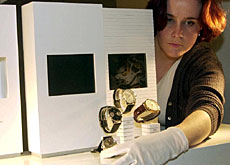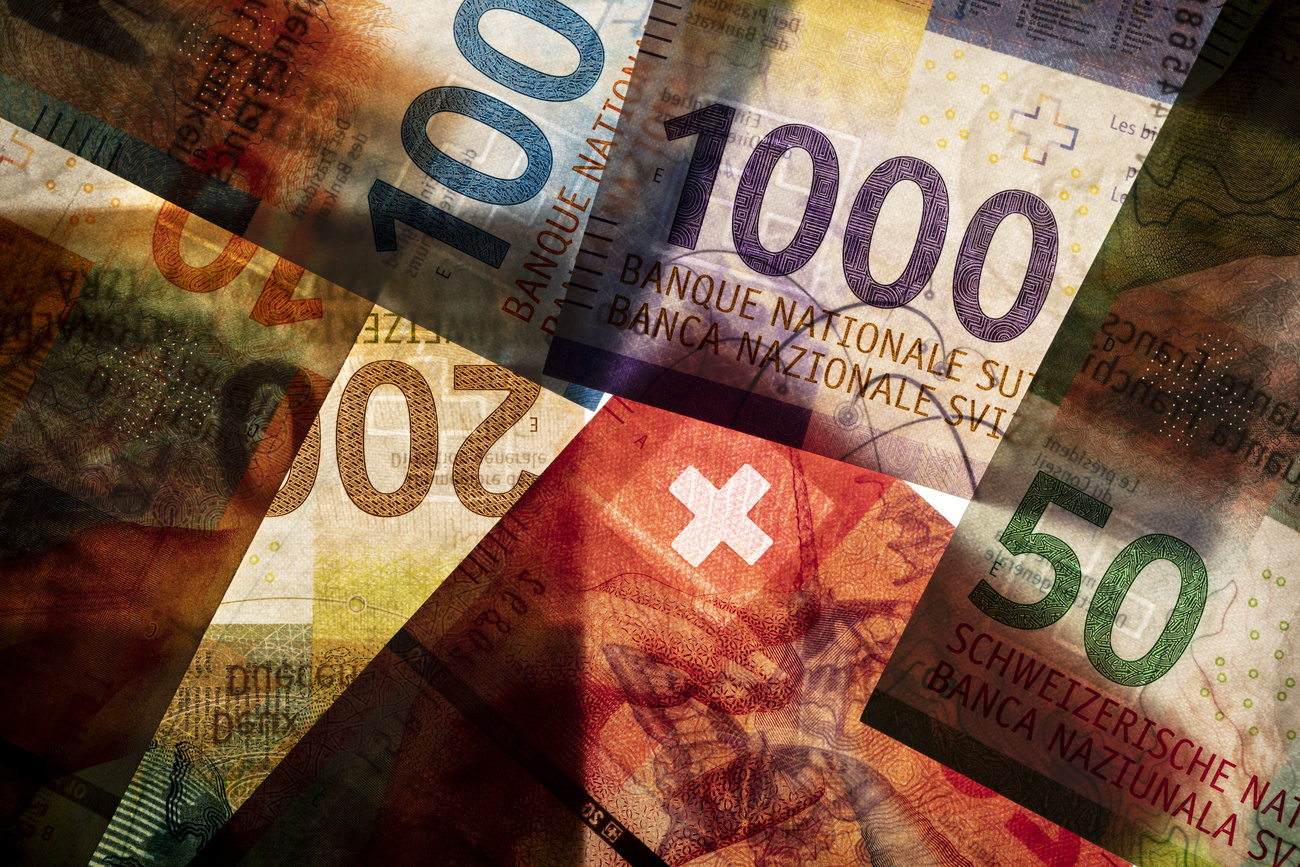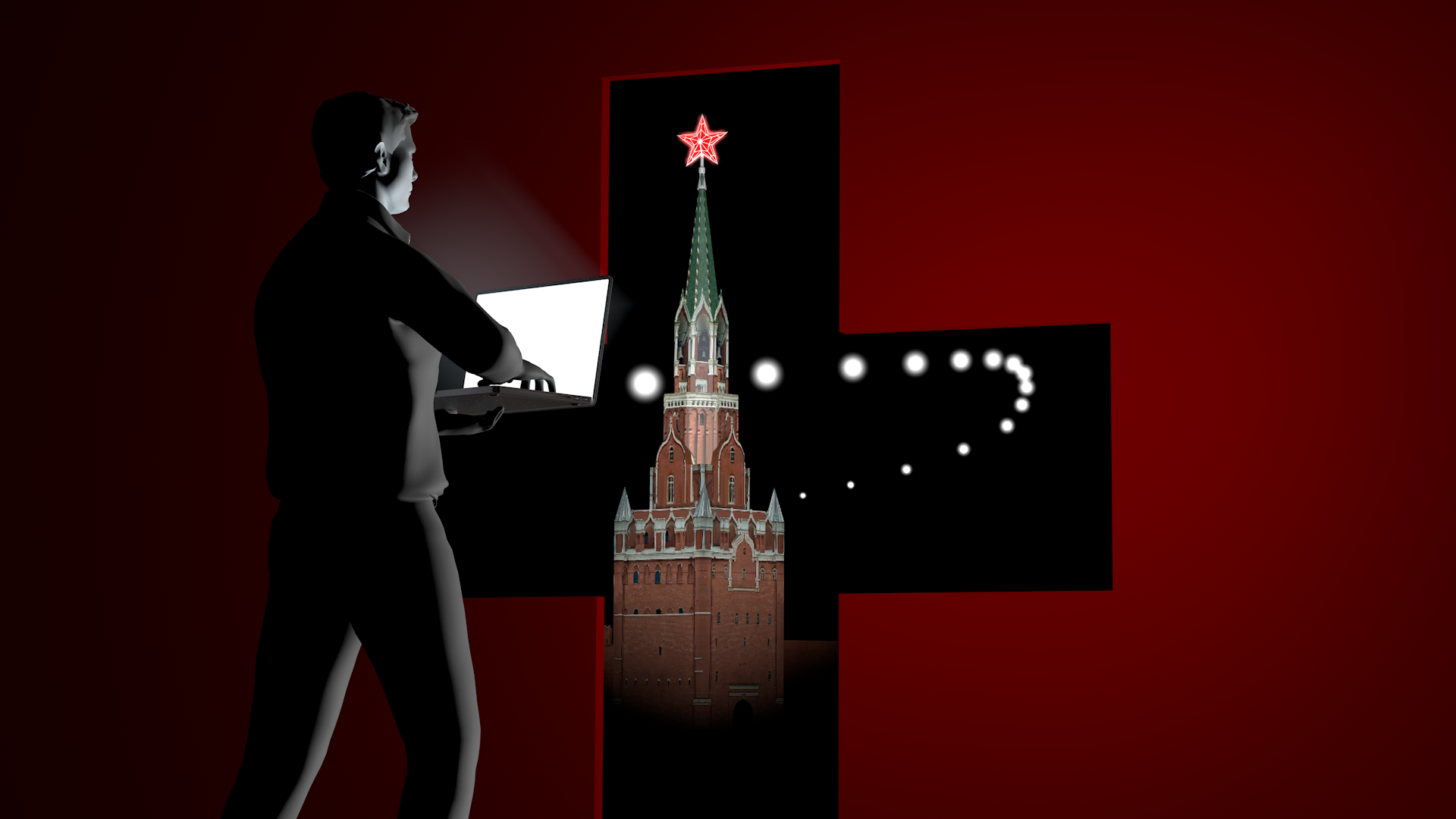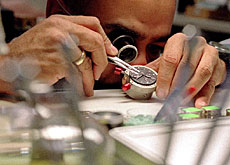Swiss watch fairs broaden their horizons

There has been intense rivalry over the years between Switzerland’s two main spring watch fairs in Basel and Geneva.
But this year’s Baselworld proves that the northern Swiss city still has the edge over its southern rival.
The fierce competition between the two cities – which marked the boom years of the watch industry – has tempered, notably because the sector has suffered from the economic downturn.
Despite a rise in watch exports in 2002, the value of exports slipped by 4.4 per cent or SFr462.9 million ($356 million) last year. The number of watches produced also fell by 8.4 per cent.
This was blamed on the recession, the war in Iraq and the deadly Sars virus.
However, the Basel fair – known as Baselworld – still remains the largest watch fair in the world.
Most of the international watch industry will be present, with more than 2,000 exhibitors from 44 countries. The Swiss watch industry is also well represented.
Top range
Around 90,000 visitors are expected to attend the fair to view products ranging from luxury watches such as Patek Philippe, which cost thousands of francs, to the more modest offerings from Hong Kong producers whose digital watches sell for $1 apiece.
Industry insiders say that Basel is the best place to find out what is going on in the global watchmaking industry.
Swiss watchmakers also use the occasion to judge the foreign competition. The Swiss industry is lagging behind in one area in particular: the lower end of the market where watches are priced at under SFr250.
Asia is the world leader in cheaper watches due to low labour costs and mass industrialisation. Millions of these watches are produced each year.
Statistics from the Federation of the Swiss Watch Industry show that this has affected the home market where sales of cheaper Swiss watches have fallen.
Geneva
The International Fine Watchmaking Exhibition in Geneva is a much smaller affair than Baselworld, with only 16 exhibitors.
And, unlike Basel, it is restricted to industry insiders, agents, vendors and the media. It is also devoted exclusively to luxury watches.
Top-of-the-range watches now account for 60 per cent of the total value of Swiss watches sold, but only make up five per cent of timepieces produced in Switzerland.
Luxury watches – for which the Swiss are famous – are now considered to be a niche product and much of their added value comes from the time spent making them and the sophistication of their mechanisms.
But industry observers say this is not enough to ensure the survival of the Swiss watchmaking trade.
Some say that the industry must ensure that it covers all sectors, from the luxury to the bottom end of the market, and it must produce more than 25 million timepieces a year.
This runs counter to the trend of the last ten years when the number of watches produced has dropped dramatically.
But insiders warn that unless Swiss watchmakers take action, they could find themselves relegated from market leaders to niche market producers of exotic timepieces by 2015.
swissinfo, Eric Othenin-Girard
The International Fine Watchmaking Exhibition in Geneva: 19-22 April.
Baselworld: 15-22 April.
Baselworld is the biggest trade fair of its kind, with over 90,000 visitors.
Only 16 makes will exhibit at the International Fine Watchmaking Exhibition in Geneva, which is devoted to luxury watches and is for industry professionals.
The Swiss watchmaking sector has but hit by the economic downturn, with a 4.4% drop in sales and a 8.4% drop in watch production in 2003.

In compliance with the JTI standards
More: SWI swissinfo.ch certified by the Journalism Trust Initiative











You can find an overview of ongoing debates with our journalists here . Please join us!
If you want to start a conversation about a topic raised in this article or want to report factual errors, email us at english@swissinfo.ch.